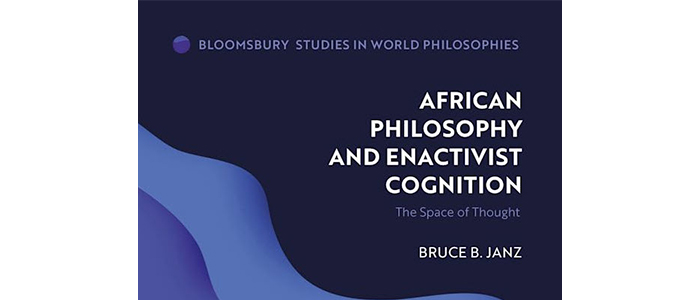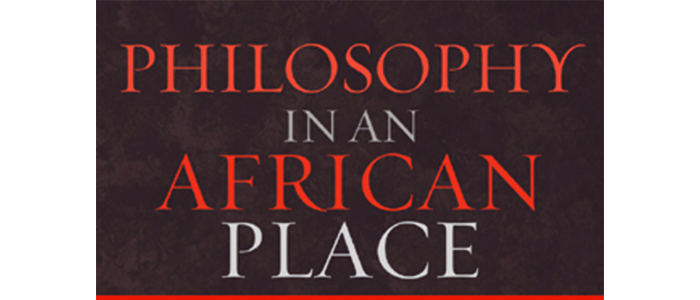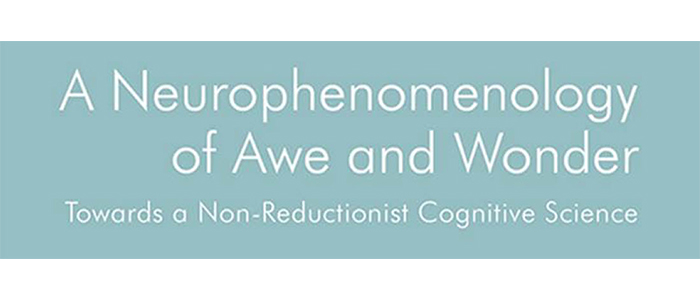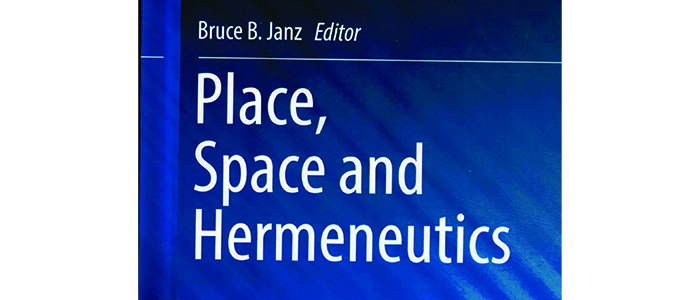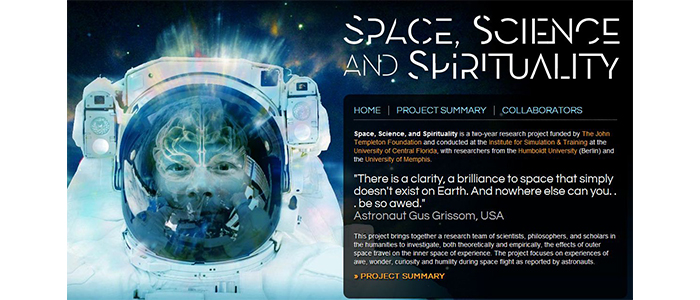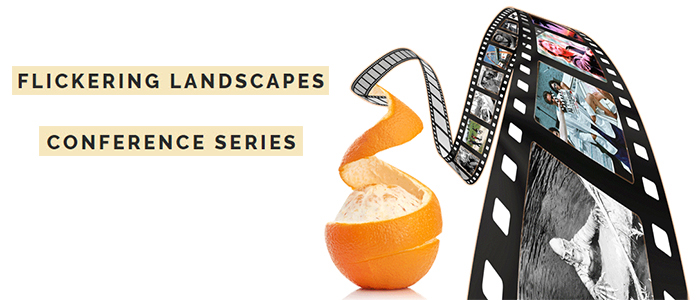Website
- Analysing Architecture (supplement for Simon Unwin’s book of the same name)
- Architectural Resources – architecture related news, books and web resources.
- Architecture
and Race (Social Identities CFP, deadline January 9,
2004) - Baukultur:
Stadtkultur – Lebenskultur (Brandenburgische Kunstsammlungen Cottbus),19-21
November 2003. - Blur Building – Diller & Scofidio.
- Canadian Centre for Architecture.
- Charles W. Moore Center for the Study of Place.
- The Concept of Space – from Embedded: Spaces.
- Constructing Place: A conference analysing the processes, the histories, and the impacts of place making
– conference, April 2002. With a conference report by Sarah Menin. - Graham Foundation for Advanced Studies in the Fine Arts – The mission of the Graham Foundation is to nurture
and enrich an informed and creative public dialogue concerning architecture and the built environment. - Implosion: Architectural Anthropology.
- Keoz.com Architecture portal.
- Relational Architecture.
- The Joy of Architecture: Conveying Our Spirituality With Our Shelters (Will Trout)
- Transgressive Architecture.
- Utzon: Nature, Vision and Place (Denmark) August 2003
- Vernacular Architecture Forum.
- Vitruvius.com – Brazilian site on architecture and urbanism
Home Pages of People in Place Research
Journals and Magazines
- Architecture and Behaviour
- Basilisk.
- Cloud-Cuckoo-Land: International Journal of Architectural Theory.
- Design Issues.
- Dwell: At Home in the Modern World.
- Environmental and Architectural Phenomenology.
- Grey Room.
- Harvard Design Magazine.
- Journal of Architecture.
- Journal of Architectural and Planning Research Also here.
- Katarxis: Contemporary New Traditional Architecture and Urbanism.
- Nordic Journal of Architectural Research.
- Perspectives in Vernacular Architecture.
- Places: A Forum of Environmental Design.
- Vernacular Architecture News.
On-line Bibliographies & Searches
- Changing Attitudes
to Time and Space (Nur Ünsalan) - Environment and Planning
A, B, C, D Search Page. - Vernacular Architecture
Newsletter Bibliography.
Courses and Programs
- Analytic Philosophy of Architecture: A Course (Saul Fisher)
- The Architecture of Space: Foundations, Construction, Visualization (Karachi, Pakistan)
- Domestic Architecture in Islam and the Poetics of Space (Carel Bertram)
- Ethics, Memory, and Place-Making (Gregory Caicco)
- Mediating Spaces: Architecture as Media, Media Shaping Architecture (Shannon Mattern)
- Place and Space.
- Qualitative Approaches to Place, Architecture, and Environmental Experience (David Seamon)
- Socio-Cultural Themes in Urban Architecture (Cânâ Bilsel, Güven Arif Sargin, Ela Alanyali)
Professional Architecture & Planning
- Dover, Kohl, and Partners – town planning
- Lucchesi, Galati Architects, Inc. – a firm that takes the interface between architecture and sociology seriously. With links, essays, etc.
- Space Syntax – company providing property and design advice to public and private agencies
General Bibliography
n.a. “Making a Place,” Pivot Interiors. http://www.pivotinteriors.com/pdf/Making_a_Place.pdf
Ábalos, Iñaki and Juan Herreros. Tower and Office: From Modernist Theory to Contemporary Practice. MIT Press, 2002.
Achenbach, Gerd. “Bauen Wohnen Nachdenken.” Cloud-Cuckoo-Land: International Journal of Architectural Theoryhttp://www.theo.tu-cottbus.de/Wolke/deu/Themen/982/Achenbach/achenbach_t.html.
Alexander, Don. “The Resurgence of Place” Alternatives 28:3 (Summer 2002).
Anella, T. “Learning from the Pueblos.” In N. Markovich, W. Preiser, & F. Sturm (Eds.), Pueblo Style and Regional Architecture NY: Van Nostrand Reinhold, 1990: 32-49.
Aoki, Keith. “Race, Space, and Place: The Relation Between Architectural Modernism, Post-Modernism, Urban Planning, and Gentrification” Fordham Urban Legal Journal 699 (1993). http://www.law.uoregon.edu/faculty/kaoki/site/articles/racespaceplace.pdf.
Assefa, Enku Mulugeta. Interpreting Frank Lloyd Wright’s Fallingwater and Alvar Aalto’s Villa Mairea Using Karsten Harries’ Natural Symbols and Thomas Thiis-Evensen’s Architectural Archetypes. Master’s Thesis, Dept.f of Architecture, Kansas State University, 2002.
Assefa, Enku Mulugeta. “Inside and Outside in Wright’s Fallingwater and Aalto’s VIlla Mairea.” Environmental and Architectural Phenomenology 14:2 (Spring 2003): 11-15. http://www.arch.ksu.edu/seamon/Assefa.htm.
Baird, George. The Space of Appearance. MIT Press, 1995.
4.0 Is space the product of historical time?
Bernard Tschumi, “Questions of Space”
Barbey, G. “Introduction: Towards a Phenomenology of Home.” Architecture and Behaviour 5 (1989): 1-10.
Bay, Alfred. “Buildings, Householders, and Reconfiguring Life.” Environmental and Architectural Phenomenology (Winter 1995) http://www.arch.ksu.edu/seamon/Bay.htm.
Behnke, Elizabeth. “Field Notes: Lived Place and the 1989 Earthquake in Northern California” Environmental and Architectural Phenomenology 1:2 (1990): 10-14.
Bell, Michael Mayerfeld. “The Ghosts of Place.” Theory and Society 26:6 (December 1997): 813-836.
Benedikt, Michael L. “Cityspace, Cyberspace, and The Spatiology of Information.” http://www.ar.utexas.edu/center/benedikt_articles/cityspace.html
Benjamin, Andrew. Architectural Philosophy. London: The Athlone Press, 2000.
Berman, Marshall. “On Place: Notes from Underground.” Harvard Design Magazine 15 (Fall 2001). http://www.gsd.harvard.edu/research/publications/hdm/back/15onplace_berman.html.
Biella, Burkhard. “Ein Denkweg an den anderen Anfang des Wohnens.” Cloud-Cuckoo-Land: International Journal of Architectural Theory http://www.theo.tu-cottbus.de/Wolke/deu/Themen/982/Biella/biella_t.html
Bloomer, Kent C. & Charles W. Moore. Body, Memory, and Architecture. New Haven: Yale University Press, 1977.
Bognar, Botond. “A Phenomenological Approach to Architecture and its Teaching in the Design Studio.” Seamon, David & Robert Mugerauer, Dwelling, Place, and Environment: Toward a Phenomenology of Person and World. Dordrecht: Martinus Nijhoff, 1985: 183-197.
Bonaiuto, M. & Bonnes, M. “Multiplace analysis of the urban environment: A comparison between a large and a small Italian city.” Environment and Behaviour 28 (1996): 699-747.
Borden, Iain, Joe Kerr, Jane Rendell and Alicia Pivaro. The Unknown City: Contesting Architecture and Social Space. MIT Press, 2002.
Borden, Iain. Skateboarding, Space and the City: Architecture and the Body. Palgrave Macmillan, 2003.
de Botton, Alain. The Architecture of Happiness. Pantheon, 2006.
Brill, Michael.” An Architecture of Peril: Design for a Waste Isolation Pilot Plant, Carlsbad, New Mexico.” Environmental and Architectural Phenomenology (Fall 1993) http://www.arch.ksu.edu/seamon/Brill.htm.
Bullard, John K. “The Speciality of Place,” Places: A Forum of Environmental Design 7:3: 72-79.
Busch, Akiko. Geography of Home: Writings About Where We Live. Princeton Architectural Press, 1999.
Burgess, Patricia. “Discovering Hidden Histories: The Identity of Place and Time.” Journal of Urban History 26:5 (July 2000): 645-656.
Bürklin Thorsten. “Das Entwerfen – ein vorausschauendes Bespielen des architektonischen Raumes.” Cloud-Cuckoo-Land: International Journal of Architectural Theory http://www.theo.tu-cottbus.de/Wolke/deu/Themen/991/Buerklin/buerklin.html.
Burns, Carol J., Andrea Kahn, eds.. Site Matters: Design Concepts, Histories, and Strategies. Routledge, 2004.
Burrell, Gibson and Karen Dale. Organisation, Space and Architecture. Palgrave Macmillan, 2005.
Burton, Joseph. “Philosophical Differences in the Thoughts of Louis I. Kahn and Martin Heidegger.” Cloud-Cuckoo-Land: International Journal of Architectural Theory 1998:2. http://www.theo.tu-cottbus.de/Wolke/eng/Subjects/982/Burton/burton_t.html.
Chase, D. M., C.L. Carlisle and R.H. Becker. “Beyond the Eye of the Beholder.” http://www.strom.clemson.edu/publications/the_eye.html
Childress, H. “Place Attachment (edited) by Irwin Altman and Seth Low” in The Journal of Architectural and Planning Research 13:4(Winter 1996): 339-344.
4.3 If space is neither a social product (an end result) nor a pure category (a starting point), is it an in-between (an intermediary)?
Bernard Tschumi, “Questions of Space”
Cline, Ann. A Hut of One’s Own: Life Outside The Circle of Architecture. Cambridge: MIT Press, 1997.
Coffin, Christie Johnson. “Making Places for Scientists.” Places: A Forum of Environmental Design 7(4): 38-49.
Colli, Stefano and Raffaella Perrone. Space-Identity-Company: Ephemeral Architecture and Corporate Events. Barcelona: Editorial Gustavo Gili, S. A., 2003.
Colomina, Beatriz, ed. Sexuality and Space. New York: Princeton Architectural Press, 1992.
Connah, Roger. How Architecture Got Its Hump. MIT Press, 2001.
Cowan, Gregory. “Nomadology in Architecture: Ephemerality, Movement, and Collaboration.” http://puffin.curtin.edu.au/~cowan/nomad/
Crowe, Norman. Nature and the Idea of a Man-made World: An Investigation into the Evolutionary Roots of Form and Order in the Built Environment. Cambridge, MA: MIT Press, 1995 (3rd Printing, 1999).
Diller, Elizabeth and Ricard Scofidio. Blur: The Making of Nothing. Harry Abrams Press, 2002.
Dillon, David. The Architecture of O’Neil Ford: Celebrating Place. Austin: University of Texas Press, 1999.
Dittmar, Gunter. “Architecture as Dwelling and Building Design as Ontological Act.” Cloud-Cuckoo-Land: International Journal of Architectural Theory 1998:2. http://www.theo.tu-cottbus.de/Wolke/eng/Subjects/982/Dittmar/dittmar_t.html.
Donohoe, Janet. “Dwelling with monuments.” Philosophy and Geography 5:2 (August 2002): 235 – 242.
Dovey, Kim. Framing Places: Mediating Power in Built Form. London: Routledge, 1999.
Downing, Frances. Remembrance and The Design of Place. College Station, TX: Texas A&M Press, 2000.
Downs, Kay. Architecture and Transgression. B.A. Thesis, 1999. http://freespace.virgin.net/pinkaboo.100acrewood/showcase/dis/frame_dis.htm.
Doxiadis, Constantinos A. Architectural Space in Ancient Greece. MIT Press, 1977.
Dreyer, Claus. “Zur Ästhetik virtueller Räume.” http://www.theo.tu-cottbus.de/Wolke/deu/Themen/981/Dreyer/dreyer_t.html.
Driscoll, Rosalyn. “The Place of Imagination,” Places: A Forum of Environmental Design 7:2: 80-91.
Eldred, Dale. “Place Defined by Time and Light.” Places: A Forum of Environmental Design 6(4):34-41.
Fellmann, Ferdinand. “Der Ort der Architektur in der Medienwelt.” http://www.theo.tu-cottbus.de/wolke/deu/Themen/961/fellmann/fellmann_t.html.
Fierro, Annette. The Glass State: The Technology of the Spectacle, Paris 1981–1998. MIT Press, 2002.
Fleming, Ronald Lee. “Questions to Ask a Place.” Places: A Forum of Environmental Design 6(4): 12-13.
Frampton, Kenneth. “Technology and the Crisis of Place.” Architectural Design December 1979.
Frampton, Kenneth. Studies in Tectonic Culture: The Poetics of Construction in Nineteenth and Twentieth Century Architecture. MIT Press, 1995.
Korzilius, Lester. “Review of Studies in Tectonic Culture” Oculus (May 1996); Architectural Record (September 1996) http://www.lkorzilius.swinternet.co.uk/pubs/book-rvw/frampton.htm OFFLINE
Frampton, Kenneth, Lynne Rosman, Arthur Spector. Technology, Place, and Architecture: The Jerusalem Seminar. St. Martin’s Press, 2001.
Francis, Tammeron. “Place, Land, and Meaning: Lessons for Making Architecture from the Adena-Hopewell.” Environmental and Architectural Phenomenology 8:1: 9-11.
Francis, T. Place, Land and Building: Lessons for the Making of Architecture from the Adena-hopewell. Master’s thesis, Department of Architecture, The University of Cincinnati, 1995.
Frick, Mats. “The concept of place in reflections on economy and architecture.” http://www.sses.com/public/events/euram/complete_tracks/management_play/frick.pdf.
Friesen, Hans. “Heideggers Architekturtheorie und die Moderne.” Cloud-Cuckoo-Land: International Journal of Architectural Theory http://www.theo.tu-cottbus.de/Wolke/deu/Themen/982/Friesen/friesen_t.html.
Führ, Eduard. “‘Genius Loci’ Phänomen oder Phantom?” Cloud-Cuckoo-Land: International Journal of Architectural Theory http://www.theo.tu-cottbus.de/Wolke/deu/Themen/982/Fuehr/fuehr_t.html.
Gabrielsson, Catherina. Out of nowhere. http://www.mikaellevin.com/catharina_gabrielsson.html.
Garnham, H. L. Maintaining the spirit of place: A Process for the Preservation of Town Character. Mesa AZ: PDA Publishers Corporation, 1985.
Gieryn, Thomas. “What Buildings Do” Theory and Society 31:1 (February 2001): 35-74.
Gins, Madeline and Arakawa. Architectural Body. University of Alabama Press, 2002.
Goodey, Brian. “The Sense of Place in British Planning: Some Considerations” Man-Environment Systems 4:4(1974): 195-202.
Graumann, C. F. “Towards a Phenomenology of Being at Home.” Architecture and Behaviour 5 (1989): 117-126.
Greenfield, Adam. “Memento Mori.” http://www.v-2.org/displayArticle.php?article_num=491.
Groat, Linda, ed. Giving Places Meaning. London: Academic Press, 1995.
Grosz, Elizabeth. Architecture from the Outside: Essays on Virtual and Real Space. MIT Press, 2001.
Günes, Tülay. “Transportable buildings and context: the case of Israeli settlements in the West Bank” http://www.polarinertia.com/july05/israeli01.htm.
Hahn, Achim. “Über das Beschreiben der Wohndinge.” Cloud-Cuckoo-Land: International Journal of Architectural Theory http://www.theo.tu-cottbus.de/Wolke/deu/Themen/972/Hahn/hahn_t.html.
Harbison, Robert. Eccentric Spaces. Boston: Godine, 1988. Reissued as Eccentric Spaces. MIT Press, 2000.
Harbison, Robert. The Built, the Unbuilt, and the Unbuildable: In Pursuit of Architectural Meaning. MIT Press, 1991.
Harbison, Robert. Thirteen Ways: Theoretical Investigations in Architecture. MIT Press, 1998.
Harries, Karsten. “Thoughts on a Non-arbitrary Architecture.” In D. Seamon (Ed.), Dwelling, Seeing and Designing: Toward a Phenomenological Ecology. Albany, New York: SUNY Press, 1993: 41-59.
Harries, Karsten. The Ethical Function of Architecture. Cambridge, Mass: MIT Press, 1997.
Harries, Karsten. “In Search of Home.” Cloud-Cuckoo-Land: International Journal of Architectural Theory 1998:2. http://www.theo.tu-cottbus.de/Wolke/eng/Subjects/982/Harries/harries_t.html.
Harries, Karsten. Comments on Four Papers, ACSA Annual Meetings, 1991 Environmental and Architectural Phenomenology (Fall 1991) http://www.arch.ksu.edu/seamon/Harries91.htm.
Hassenpflug, Dieter. “Atopias: The Challenge of Imagineering.” Cloud-Cuckoo-Land: International Journal of Architectural Theory 1998:1. http://www.theo.tu-cottbus.de/Wolke/eng/Subjects/981/Hassenpflug/hassenpflug_t.html.
Hagmann, Stephen Anand. The Place of the In-Between. M. Arch. Thesis. http://scholar.lib.vt.edu/theses/available/etd-042399-202654/unrestricted/thesis.pdf.
Helphand, Benjamin R. “Cairns: “Teaching a Stone to Speak”” Environmental and Architectural Phenomenology (Winter 1999) http://www.arch.ksu.edu/seamon/cairns.htm.
Hester, R., Jr. “Sacred Structures and Everyday Life: a Return to Manteo, North Carolina.” In D. Seamon (Ed.), Dwelling, Seeing and Designing: Toward a Phenomenological Ecology. Albany, New York: SUNY Press, 1993: 271-297.
Hieb, L. “The Metaphors of Hopi Architectural Experience.” In N. Markovich, W. Preiser, & F. Sturm (Eds.), Pueblo Style and Regional Architecture. NY: Van Nostrand Reinhold, 1990: 10-23.
Hillier, Bill. Space is the Machine: A Configurational Theory of Architecture. Cambridge: University of Cambridge Press, 1999.
Seamon, David. “Review of Bill Hillier, Space is the Machine.” Environmental and Architectural Phenomenology 14:3 (Fall 2003): 6-8.
Hollier, Denis. Against Architecture: The Writings of Georges Bataille. Translated by Betsy Wing. MIT Press, 1990.
Huyssen, Anders. “After the War: Berlin as Palimsest.” Harvard Design Magazine 10 (Winter/Spring 2000). http://www.gsd.harvard.edu/research/publications/hdm/back_issues/10onplace_huyssen.html.
Hyde, Mary Morris. Local Sentiments in Urban Neighborhoods: Multilevel Models of Sense of Community and Attachment to Place. Dissertation. University of Maryland, Baltimore County,1998.
Jackson, J. B. A Sense of Place, A Sense of Time. New Haven: Yale University Press, 1994.
Jacobs, Ned. “Changing the World by Saving Place” Alternatives 28:3 (Summer 2002). Abstract
Jager, Bernd. “Body, House, and City: The Intertwinings of Embodiment, Inhabitation and Civilization.” Seamon, David & Robert Mugerauer, Dwelling, Place, and Environment: Toward a Phenomenology of Person and World. Dordrecht: Martinus Nijhoff, 1985: 215-225.
James, Geoffrey Abbott. Cross-Cultural Exchange and the Infinite Place. M. Arch. Thesis. http://scholar.lib.vt.edu/theses/available/etd-71597-191524/unrestricted/geo.pdf.
Judin, Hilton, Ivan Vladislavic, eds. Blank: Architecture, Apartheid and After. NAI Publishers, 1999.
Karatani, Kojin, ed. Architecture as Metaphor: Language, Number, Money. Translated by Sabu Kohso. MIT Press, 1995.
Kelbaugh, Douglas. “Critical Regionalism, An Architecture of Place” Common Place: Toward Neighbourhood and Regional Design. University of Washington Press, 1997.
Kent, Susan. Domestic Architecture and the Use of Space. Cambridge University Press, 1993.
Kerber, Bernhard. “Kunstraum und Lebensraum.” Cloud-Cuckoo-Land: International Journal of Architectural Theory http://www.theo.tu-cottbus.de/wolke/deu/Themen/961/kerber/kerber_t.html.
King, A. D. “A Time for Space and a Space for Time: The Social Production of the Vacation House.” in Buildings and Society: Essays on the Social Development of the Built Environment. London: Routledge and Kegan Paul, 1979.
Korzilius, Lester. “The Importance of Place in Architecture.” http://www.lesterkorzilius.com/pubs/ma/pdf/place.pdf.
Korzilius, Lester. “Monuments and their Meaning.” http://www.lesterkorzilius.com/pubs/ma/pdf/monument.pdf.
Korzilius, Lester. “Medieval Castles and their Meaning.” http://www.lesterkorzilius.com/pubs/ma/pdf/med.pdf.
Krell, David Farrell. Archeticture: Ecstasies of Space, Time, and the Human Body. Albany: SUNY Press, 1995.
Kuhlmann, Dörte. “Der Geist des (W)ortes.” Cloud-Cuckoo-Land: International Journal of Architectural Theory http://www.theo.tu-cottbus.de/Wolke/deu/Themen/982/Kuhlmann/kuhlmann_t.html.
Kwinter, Sanford. Architectures of Time: Toward a Theory of the Event in Modernist Culture. MIT Press, 2002.
D. Lasansky, Brian McLaren. Architecture and Tourism: Perception, Performance and Place. Palgrave Macmillan, 2004.
Lawrence, R. J. “A psychological-spatial approach for architectural design and research.” in Groat, Linda, ed. Giving Places Meaning. London: Academic Press, 1995.
Lawson, Bryan. The language of space. Oxford; Boston: Architectural Press, 2001.
Leach, Neil. Rethinking Architecture: A Reader in Cultural Theory. Routledge, 1997.
Leach, Neil. The Anaesthetics of Architecture. MIT Press, 1999.
Leatherbarrow, David. Uncommon Ground: Architecture, Technology, and Topography. MIT Press, 2002.
Lees, Loretta. “Ageographia, heterotopia, and Vancouver’s new public library.” Environment and Planning D-Society & Space 15 (1997): 321-347.
Lin, Yuan. “Karsten Harries’ Natural Symbols and Frank Lloyd Wright’s Natural Houses.” Environmental and Architectural Phenomenology (Fall 1991) http://www.arch.ksu.edu/seamon/Lin91.htm.
Lowenthal, David. “Visible Cities” Harvard Design Magazine 13 (Spring 2001). http://www.gsd.harvard.edu/research/publications/hdm/back_issues/13onplace_lowenthal.html.
Luebbers, Leslie Laird. Place, Time and the Art of Architecture: The Education of Charles W. Moore. Dissertation. New York University, 2001.
Lynch, Kevin. “The Waste of Place.” Places: A Forum of Environmental Design 6(2): 10-23.
Mead, Christopher Curtis. The Architecture of Bart Prince: A Pragmatics of Place. W. W. Norton, 1999.
Menser, Michael. “Becoming-Heterarch: On Technocultural Theory, Minor Science, and the Production of Space.” Aronowitz, Stanley, Martinsons, Barbara, & Menser, Michael (Eds), Technoscience and Cyberculture. New York, NY: Routledge, 1996: 293-316.
Mitrasinovic, Miodrag. Theme Park: Heterotopia in a Themed Mode. Dissertation, University of Florida, 1998. http://web.nwe.ufl.edu/~wtilson/miodrag/dissertation.html.
Moore, C., G. Allen and D. Lyndon. The Place of Houses. New York: Holt, Rinehart and Winston, 1974; University of California Press, 2001.
Moore S. A. “Technology, Place, and the Nonmodern Thesis.” Journal of Architectural Education 54:3 (February 2001): 130-139.
Moore, Steven A. Technology and place: sustainable architecture and the Blueprint Farm. Austin : University of Texas Press, 2001.
Mueller, Alfred G. “Constructing Power Architecturally: A Spatial Look at Uniate Catholicism in Kyiv Today” Ethnologies 24:1 (2002)
Mugerauer, Robert. “Toward an Architectural Vocabulary: the Porch as a Between.” in D. Seamon (Ed.), Dwelling, Seeing, and Designing: Toward a Phenomenological Ecology. Albany, New York: SUNY Press, 1993: 103-128.
Mugerauer, Robert. Interpretations on Behalf of Place: Environmental Displacements and Alternative Responses. Albany: SUNY Press, 1994.
Condon, Patrick. “Review of Mugerauer, Robert. Interpretations on Behalf of Place.” Environmental and Architectural Phenomenology (Winter 1997) http://www.arch.ksu.edu/seamon/Mugerauer1.htm.
Newman, David. “Jun Nguyen-Hatsushiba. The Place of Meaning, The Meaning of Place.” http://rampages.onramp.net/~dnewman/hatsushi.htm OFFLINE
Norberg-Schulz, Christian. Intentions in Architecture. MIT Press, 1968.
Norberg-Schulz, Christian. Existence, Space, and Architecture. New York: Praeger, 1971.
Norberg-Schulz, Christian. Genius Loci: Towards a Phenomenology of Architecture. New York: Rizzoli, 1980.
Norberg-Schulz, Christian. The Concept of Dwelling: On the Way to Figurative Architecture. New York: Rizzoli, 1985.
Norberg-Schulz, Christian & Paulo Portoghesi. Architecture: Meaning and Place: Selected Essays. New York: Rizzoli, 1988.
Norberg-Schulz, Christian. Nightlands: Nordic Building. Cambridge: MIT Press, 1996.
Norberg-Schulz, C. Architecture: Presence, Language, Place. Skira editore, Milan, 2000.
Norton, Derek Mason. Architecture and the Crisis of Place. M. Arch. Thesis. http://scholar.lib.vt.edu/theses/available/etd-051399-185914/unrestricted/DMNbook.pdf.
Nute, Kevin. “‘Ma’ and the Japanese Sense of Place Revisited: by Way of Cyberspace.” http://web1.arch.hawaii.edu/events/EW99/pdfs/nute.pdf.
Nute, Kevin. Place, Time and Being in Japanese Architecture. London: Routledge, 2004.
Olivier, G. “Heidegger and Architecture: Preliminary Remarks.” South African Journal of Philosophy 3 (1984): 22-30.
O’Sullivan, David. “Space: Definitions and Models” http://www.geog.psu.edu/faculty/osullivan/phd/ch2.pdf.
Parcell, Stephen and Alberto Pérez-Goméz. Chora: Intervals in the Philosophy of Architecture: 3 Vols. Montreal: McGill-Queen’s University Press.
Pearson, M. Parker & C. Richards. Architecture & Order: approaches to social space. London: Routledge, 1994.
Pérez-Goméz, Alberto. Architecture and the Crisis of Modern Science. Cambridge, Mass: MIT Press, 1983.
Pérez-Goméz, Alberto. “Dwelling on Heidegger: Architecture as Mimetic Techo-Poiesis.” Cloud-Cuckoo-Land: International Journal of Architectural Theory 1998:2. http://www.theo.tu-cottbus.de/Wolke/eng/Subjects/982/Perez-Gomez/perez-gomez_t.html.
Pérez-Goméz, Alberto. “Hermeneutics as Architectural Discourse.” Cloud-Cuckoo-Land: International Journal of Architectural Theory 1997:2. http://www.theo.tu-cottbus.de/Wolke/eng/Subjects/972/Perez-Gomez/perez-gomez_t.html.
Pérez-Gómez, Alberto and Louise Pelletier. Architectural Representation and the Perspective Hinge. MIT Press, 1997.
Pringle, Trish. “The Space of Stage Magic: A Study of the Application of Optical, Mechanical, and Psychological Principles in Classic Stage Illusions and Their Possible Relation to 20th-/21st-Century Experiences of Interior Architectural Space.” Space and Culture 5:4 (November 2002): 333-345.
Prussin, Labelle, Sylvia Williams, Robert Farris Thompson. African Nomadic Architecture: Space, Place, and Gender. Washinton, DC: Smithsonian Institution Press, 1997.
Pultar, Mustafa. “A Structured Approach to Cultural Studies of Architectural Space.” http://www.bilkent.edu.tr/~pultar/Papers/Spacult/Spacult.html.
Purswell, Valerie Gaddis. “Place, Bound By a Circle, A Hospice.” M. A. Thesis. http://scholar.lib.vt.edu/theses/available/etd-10172000-19230054/.
Ragon, Michel. The Space of death: a study of funerary architecture, decoration and urbanism, trans. Alan Sheridan. Charlottesville, VA.: University Press of Virginia, 1983.
Rajchman, John. Constructions. Cambridge: MIT Press, 1998. See also Philosophy, Deleuze.
Ramirez, Eugenio Michel. A House in Cuba: Dialogue with the Place. M. Arch. Thesis. http://scholar.lib.vt.edu/theses/available/etd-02092000-18330048/.
Rapoport, Amos. The Meaning of the Built Environment: a Nonverbal Communication Approach. Beverly Hills: Sage Publications, 1982.
Rendell, J., B. Penner & I. Borden (eds) Gender Space Architecture: an interdisciplinary introduction. London: Routledge, 2000.
Risser, James. “Siting Order at the Limits of Construction: Deconstructing Architectural Place” Research in Phenomenology 22(1992): 62-72.
Rybczynski, Witold. Home: A Short History of an Idea. New York: Viking, 1986.
Rybczynski, Witold. The most beautiful house in the world. New York, N.Y., U.S.A., Viking, 1989.
Rybczynski, Witold. City life: urban expectations in a new world. New York: Scribner, 1995.
Rybczynski, Witold. A clearing in the distance: Frederick Law Olmsted and North America in the nineteenth century. Toronto: HarperPerennial Canada, 1999.
Rybczynski, Witold. The Perfect House: A Journey with the Renaissance Master Andrea Palladio. New York: Scribner, 2002.
Rykwert, Joseph. On Adam’s House in Paradise: The Idea of the Primitive Hut in Architectural History. Cambridge, Mass: MIT Press, 1981.
Rykwert, Joseph. The Idea of a Town: The Anthropology of Urban Form in Rome, Italy, and The Ancient World. MIT Press, 1988.
Rykwert, Joseph. The Dancing Column: On Order in Architecture. MIT Press, 1996.
Rykwert, Joseph. Seduction of Place: The City in the 21st Century. New York: Schocken Books, 2000.
Harbison, Robert. Review of Joseph Rykwert, Seduction of Place: The City in the 21st Century. Architectural Review, 210:1254 (Aug 2001): 89.
Saeter, Oddrun. “When “The Art of the Strangers” Throws Light on Place and Local Identity.” Nordic Journal of Architectural Research 9:3 (1996).
Scheerbart, Paul. The Gray Cloth: A Novel on Glass Architecture. Translated by John A. Stuart. MIT Press, 2001.
Seamon, D. “Toward a Phenomenology of the Architectural Lifeworld.” In J. Hancock and W. Miller (Eds.), Architecture: back..to…life [Proceedings of the 79th Annual Meeting of the Association of Collegiate Schools of Architecture] Washington, D. C.: ACSA Press, 1991: 3-7.
Seamon, David, ed. Dwelling, Seeing, and Designing: Towards a Phenomenological Ecology. Albany: SUNY Press, 1993.
Seamon, David. “Concretizing Heidegger´s Notion of Dwelling: The Contributions of Thomas Thiis-Evensen and Christopher Alexander” Cloud-Cuckoo-Land: International Journal of Architectural Theory 1998:2. http://www.theo.tu-cottbus.de/Wolke/eng/Subjects/982/Seamon/seamon_t.html or http://www.arch.ksu.edu/seamon/Heidegger.htm.
Seamon, David. “Phenomenology, Place, Environment, and Architecture: A Review of the Literature” http://www.arch.ksu.edu/seamon/Seamon_reviewEAP.htm.
Seamon, David. “Making Community and Place: Commonalities and Contrasts in the Work of Daniel Kemmis and Christopher Alexander.” Environmental and Architectural Phenomenology (Fall 1999) http://www.arch.ksu.edu/seamon/alex_kemmis.htm.
Seamon, David. ” Grasping the Dynamism of Urban Place: Contributions from the Work of Christopher Alexander, Bill Hillier, and Daniel Kemmis.” http://www.arch.ksu.edu/seamon/buttimer_chap.htm.
Sherlock, Jay T. Synthesis. M. Arch. Thesis. http://scholar.lib.vt.edu/theses/available/etd-07192000-14340041/unrestricted/-synthesis-.pdf.
Solà-Morales, Ignasi de. Differences: Topographies of Contemporary Architecture. Cambridge: MIT Press, 1997.
Stefanou, Joseph & Hatzopoulou, Alice. “The Physiognomy of Places. The Imprint of Specificities of a Society on Space; La Physionomie des lieux. L’Empreinte des specificites d’une societe a l’espace.” Societes 40 (1993): 211-216.
Stefanovic, I. L. “The Experience of Place: Housing Quality from a Phenomenological Perspective.” in Canadian Journal of Urban Research 1:2 (December 1992): 145-161.
Stefanovic, I. L. “Temporality and Architecture: A Phenomenological Reading of Built Form.” Journal of Architectural and Planning Research 11 (1994): 211-225.
Sumnu, Umut. The 1912 Galata Bridge as a Site of Collective Memory. M. F. A. Thesis, Bilkent University, 2002. http://www.thesis.bilkent.edu.tr/0002124.pdf.
Szántó, András, Eric Fredericksen, & Ray Rinaldi. “The Architecture Critic: A Survey of Newspaper Architecture Critics in America.” http://www.najp.org/publications/research/architecture/index.htm.
Taylor, Matt. “Philosophy and the Practice of Architecture.” http://www.mgtaylor.com/mgtaylor/jotm/spring97/architec.htm.
Thiis-Evensen, T. Archetypes in Architecture. Oslo: Scandinavian University Press, 1987.
Tholen, Georg Christoph. “Der Ort des Raums. Heideggers Kant-Lektüre und ihre Aktualität.” Cloud-Cuckoo-Land: International Journal of Architectural Theory http://www.theo.tu-cottbus.de/Wolke/deu/Themen/982/Tholen/tholen_t.html.
Thomsen, Christian W. Sensuous Architecture: The Art of Erotic Building. New York: Prestel, 1998.
Tigerman, Stanley. The Architecture of Exile. New York: Rizzoli, 1988.
1.63 If the history of architecture is the history of spatial concepts, is space as a uniformly extensive material to be modeled in various ways at the origin of architectural space as (a) the power of volumes and their interactions; (b) hollowed-out interior space; (c) the interaction between inner and outer space; (d) the presence of absence?
Bernard Tschumi, “Questions of Space”
Tschumi, Bernard. Questions of Space: Lectures on Architecture. London: Architectural Association, 1990.
Tschumi, Bernard. Architecture and Disjunction. MIT Press, 1996.
Tschumi, Bernard. “The Architectural Paradox” in Architecture and Disjunction. MIT Press, 1996: 27-52.
Tschumi, Bernard. “Questions of Space” in Architecture and Disjunction. MIT Press, 1996: 53-64.
Tschumi, Bernard. “The Pleasure of Architecture.” Architecture and Disjunction. MIT Press, 1996: 81-96.
Urbach, Henry. “Writing Architectural Heterotopia.” The Journal of Architecture 3 (Winter 1998): 347-354.
Venturi, R., Scott Brown, D. and Izenour, S. Learning From Las Vegas: The Forgotten Symbolism of Architectural Form. Revised Edition. Cambridge, MA: MIT Press, 1977.
Vidler, Anthony. The Architectural Uncanny: Essays in the Modern Unhomely. MIT Press, 1992.
Vidler, Anthony. Warped Space: Art, Architecture, and Anxiety in Modern Culture. MIT Press, 2000.
Volchok, Jury. “Die Architektonik der Intertextualität (Die Aussichten der Projektinterpretation).” Cloud-Cuckoo-Land: International Journal of Architectural Theory http://www.theo.tu-cottbus.de/Wolke/deu/Themen/991/Volchok/volchok.html.
Waldenfels. Bernhard. “Architektonik am Leitfaden des Leibes.” Cloud-Cuckoo-Land: International Journal of Architectural Theory http://www.theo.tu-cottbus.de/wolke/deu/Themen/961/waldenfels/waldenfels_t.html.
Wang, Jun-Yang. Substance or Context – A study of the concept of place. Dep. of Building Design, School of Architecture CTH, Göteborg, Sweden 1995.
Wang, Jun-Yang. “Piranesi, Koolhaas, and the Subversion of the Concept of Place.” Nordic Journal of Architectural Research 10:2 (1997).
Weinheimer, John F. III. A Place of Our Own. M.A. Thesis. http://scholar.lib.vt.edu/theses/available/etd-11597-123711/.
Whitman, Paula, ed. Making Spaces, Writing Places. Unpublished colloquium notes on architecture and writing. Mentioned in Meanjin, 60:1 (2001): 109-112.
Wigley, Mark. The Architecture of Deconstruction: Derrida’s Haunt. MIT Press, 1993.
Woessner, Martin. “Daniel Libeskind: From the End of Architecture to the Space of Memory.” Backhaus, Gary and John Murungi, eds. Lived Topographies: and their Mediational Forces. Lanham, MD: Lexington Books, 2005.
Woodside, Rob. “The Significance of Place and Monuments.” http://www.symbolstone.org/archaeology/aslan/conferences/conf2000/rwoodside_aslan_2000.html OFFLINE
Worpole, Ken. Here Comes the Sun: Architecture and public space in 20th century European culture. Reaktion Books, 2000.
Worpole, Ken, “Architecture, Landscape and the Social Democratic Sublime” – photo essay http://www.worpole.dircon.co.uk/show_soc_dem_sublime.htm.
